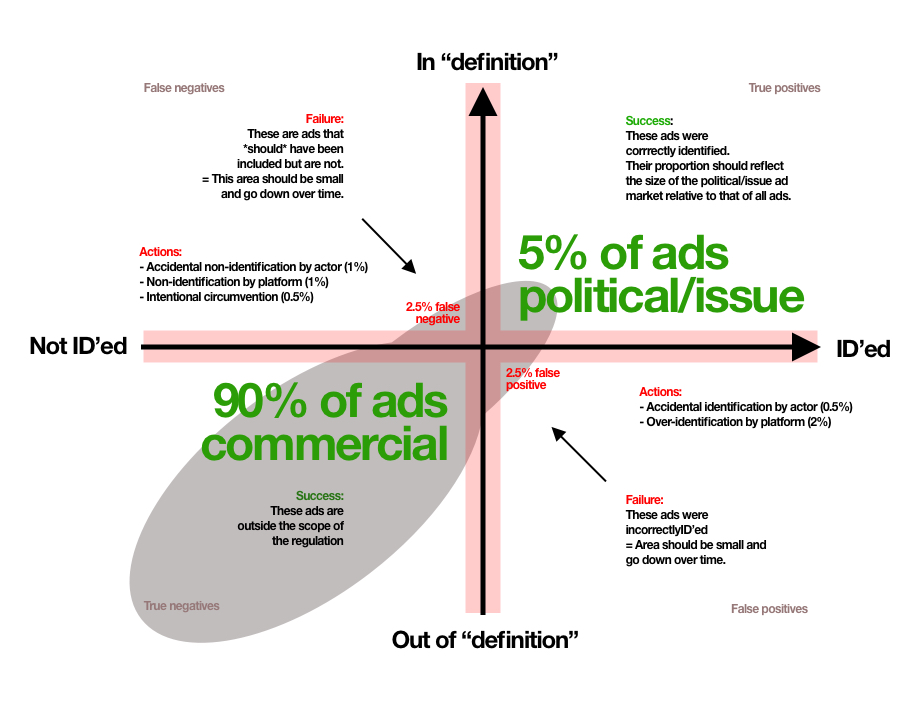We spent the day in Brussels yesterday talking with policymakers and organisations who are working on the forthcoming EU Regulation on Political Ads.
Overall, the Regulation is heading in broadly the right direction (more transparency and verification, some limitation on methods), but there’s a few course corrections needed and places where it could be improved.
One of those is the definition of a political ad (another is being very specific about transparency requirements). As you’d expect, there’s a lot of debate about “what actually is a political ad?” The core of a definition is easy (politicians running ads in election campaigns), but the edges are difficult to map (see this thread of examples). This means blurriness, and it’s where we think the regulation needs more focus on the overall system and performance of the system for deciding what is and isn’t a political ad.
Regulation almost always includes some acceptable tolerances (e.g. an individual kilo of flour doesn’t have to always weigh exactly a kilo, there’s some leeway provided that most bags are within a few grams and the average weight of many bags is accurate). It does this because it’s trying to ensure the consistency of a system, not the absolute perfection of every single individual outcome.
This is why we think the political ad regulation needs to focus on the system and how well it functions.
Here’s a diagram to explain what we mean:

Unpacking it:
- The grey blob = all ads.
- Ads falling in the top right quadrant are “correctly identified political or issue ads” (true positives)
- The bottom left quadrant is for “correctly identified non political or issue ads” (true negatives)
- The other two quadrants are the failure cases:
- Top left = ads that should have been identified, but weren’t (these evaded the burden of transparency etc that the regulation sets out). These are false negatives.
- Bottom right = ads that shouldn’t have been identified, but were (as a result, these ads were over-regulated). These are false positives.
- The pink areas are the “tolerances” in the definition. E.g. It could be 0.1% “wide” for electoral ads, and 1% “wide” for issue ads.
What we want, if we’re to study how well a political ad system works, is for services to report on:
- How many ads fall into each quadrant (as well as their combined cost and reach)
- How that information changes over time (by reporting this information periodically)
- A numerical breakdown of the causes of system failure (e.g. advertisers failing to declare their ads as political).
- Independent audits of these numbers (say by re-moderating and re-classifying a sample of the ads that have run).
The goal here is to try and shrink the failure states so that they fall entirely within the tolerance ranges.
Fortunately services have lots of options for doing that:
- Making the rules clearer to their advertisers so they can follow them accurately
- Tweaking their rules
- Giving advertisers more granularity about declaring the type of ads they’re running (electoral, political, social issues, campaign, corporate social responsibility etc), again, to help them self-declare their ads accurately
- Human detection/moderation processes
- Automated detection/moderation processes
- Better user or community reporting of mis-identified ads (along with good systems for dealing with the abuse of this feature)
Overall, we think rules focusing on the system (and the tolerances within it) will perform better in the long run. They’re more flexible, allow regulators to ask better questions of what’s happening and help ad services refine their processes to better meet their responsibilities.
It’s one of the directions we’d like to see the forthcoming regulation take.